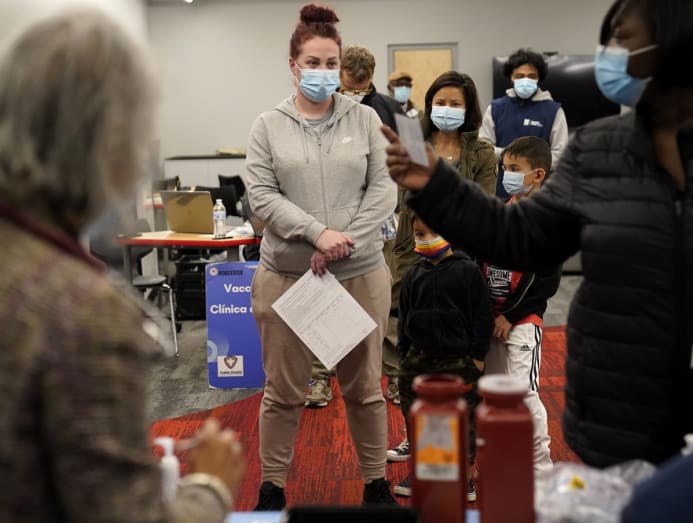Commentary: How the Delta variant that became dominant worldwide has lessons for Omicron
Researchers think mutations on the Delta variant contributed to its increased transmissibility and Omicron is the most heavily mutated variant so far, points out a US virologist.

COLLEGE TOWN, Pennsylvania: A new variant named Omicron (B.1.1.529) was reported by researchers in South Africa on Nov 24, and designated a "variant of concern" by the World Health Organization two days later.
Omicron is very unusual in that it is by far the most heavily mutated variant yet of SARS-CoV-2, the virus that causes COVID-19.
The Omicron variant has 50 mutations overall, with about 30 mutations on the spike protein alone, many more than the Delta variant. The spike protein - which forms protruding knobs on the outside of the SARS-CoV-2 virus - helps the virus adhere to cells so that it can gain entry.
It is also the protein that all three vaccines currently available in the United States use to induce protective antibodies.
The larger number of mutations in the Omicron variant may mean that it could be more transmissible or better at evading immune protection - a prospect that is very concerning.
EMERGENCE OF NEW VARIANTS NOT UNEXPECTED
While the unusually high number of mutations in the Omicron variant is surprising, the emergence of yet another SARS-CoV-2 variant is not unexpected.
Through natural selection, random mutations accumulate in any virus. This process is sped up in RNA viruses, including SARS-CoV-2. If and when a set of mutations provides a survival advantage to a variant over its predecessors, the variant will outcompete all other existing virus variants.
Does the Omicron variant's greater number of mutations mean it is more dangerous and transmissible than Delta? We simply don't know yet.

The conditions that led to the emergence of the variant are not yet clear, but what is clear is that the sheer number and configuration of mutations in Omicron is unusual.
One possible explanation for how viral variants with multiple mutations emerge is through prolonged infection in a patient whose immune system is suppressed - a situation that can lead to rapid viral evolution.
Researchers have hypothesised that some of the earlier SARS-CoV-2 variants, such as the Alpha variant, may have stemmed from a persistently infected patient.
However, the unusual constellation and numerous mutations in the omicron variant make it very different from all other SARS-CoV-2 strains, which raises questions about how it came about.
Another possible source of variants could be through animal hosts. The virus that causes COVID-19 can infect several animal species, including mink, tigers, lions, cats and dogs.
In a study that is not yet peer-reviewed, an international team that I lead recently reported widespread infection by SARS-CoV-2 in free-living and captive white-tailed deer in the US.
Therefore, we also cannot rule out the possibility that the Omicron variant emerged in an animal host through rapid evolution.
HOW THE DELTA VARIANT BECAME DOMINANT WORLDWIDE
Delta is between 40 per cent and 60 per cent more transmissible than the Alpha variant and nearly twice as transmissible as the original SARS-CoV-2 virus first identified in China.
The Delta variant's heightened transmissibility is the primary reason why researchers believe it was able to outcompete other variants to become the dominant strain.
A key factor in viral fitness is its replication rate - or how quickly a virus can make more copies of itself.
The Delta variant replicates faster than previous SARS-CoV-2 variants, and a not-yet-peer-reviewed study estimated that it produces 1,000 times more virus particles than its predecessors.
In addition, people infected with the Delta variant are making and shedding more virus, which is another potential mechanism for its increased ability to spread.
Research suggests that a possible explanation for the Delta variant's heightened ability to replicate is that mutations in the spike protein led to more efficient binding of the spike protein to its host, via the ACE-2 receptor.
The Delta variant has also acquired mutations that would allow it to evade neutralising antibodies that serve a critical role in the body's defence against an invading virus.

This could explain why, as multiple reports have shown, the COVID-19 vaccines have been somewhat less effective against the Delta variant. This combination of high transmissibility and immune evasion could help explain how the Delta variant became so successful.
Studies also show that people infected with the Delta variant have a higher risk of being hospitalised compared to those infected with the original SARS-CoV-2 and early variants.
One particular mutation on the spike protein of the Delta variant - the P681R mutation - is thought to be a key contributor to its improved ability to enter cells and to cause more severe disease.
WILL OMICRON REPLACE DELTA?
It is too early to say if the Omicron variant is fitter than Delta or if it will become dominant. Omicron shares some mutations with the Delta variant but also possesses others that are quite different.
But one of the reasons why the research community is particularly concerned is that the Omicron variant has more mutations than Delta in the receptor-binding domain - the part of the spike protein that interacts with the ACE-2 receptor and mediates entry into cells.
Suppose the combination of all the mutations in Omicron makes it either more transmissible or better at immune evasion than Delta. In that case, we could see the spread of this variant globally.
However, it is also possible that the unusually high number of mutations could be detrimental to the virus and make it unstable.
It is highly likely that the Omicron variant is not the endgame and that more SARS-CoV-2 variants will emerge. As SARS-CoV-2 continues to spread among humans, natural selection and adaptation will result in more variants that could plausibly be more transmissible than Delta.
We know from influenza viruses that the process of viral adaptation never ends. Lower vaccination rates among many countries means that there are still a lot of susceptible hosts out there for the virus, and that it will continue to circulate and mutate as long as it can spread.
The emergence of the Omicron variant is yet another reminder of the urgency to vaccinate to stop the further spread and evolution of SARS-CoV-2.
Suresh V Kuchipudi is a Professor of Emerging Infectious Disease at Pennsylvania State University. This commentary first appeared on The Conversation.










